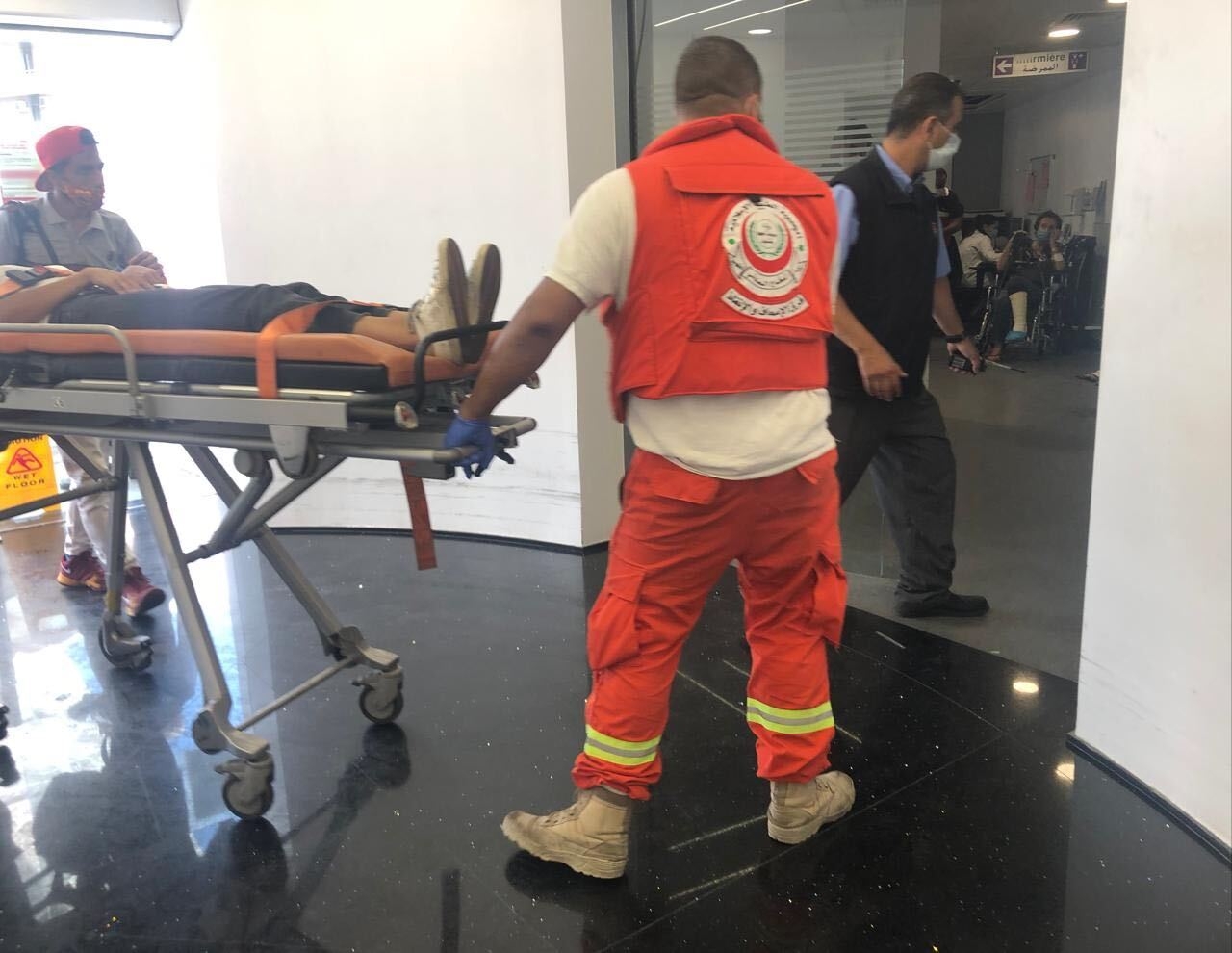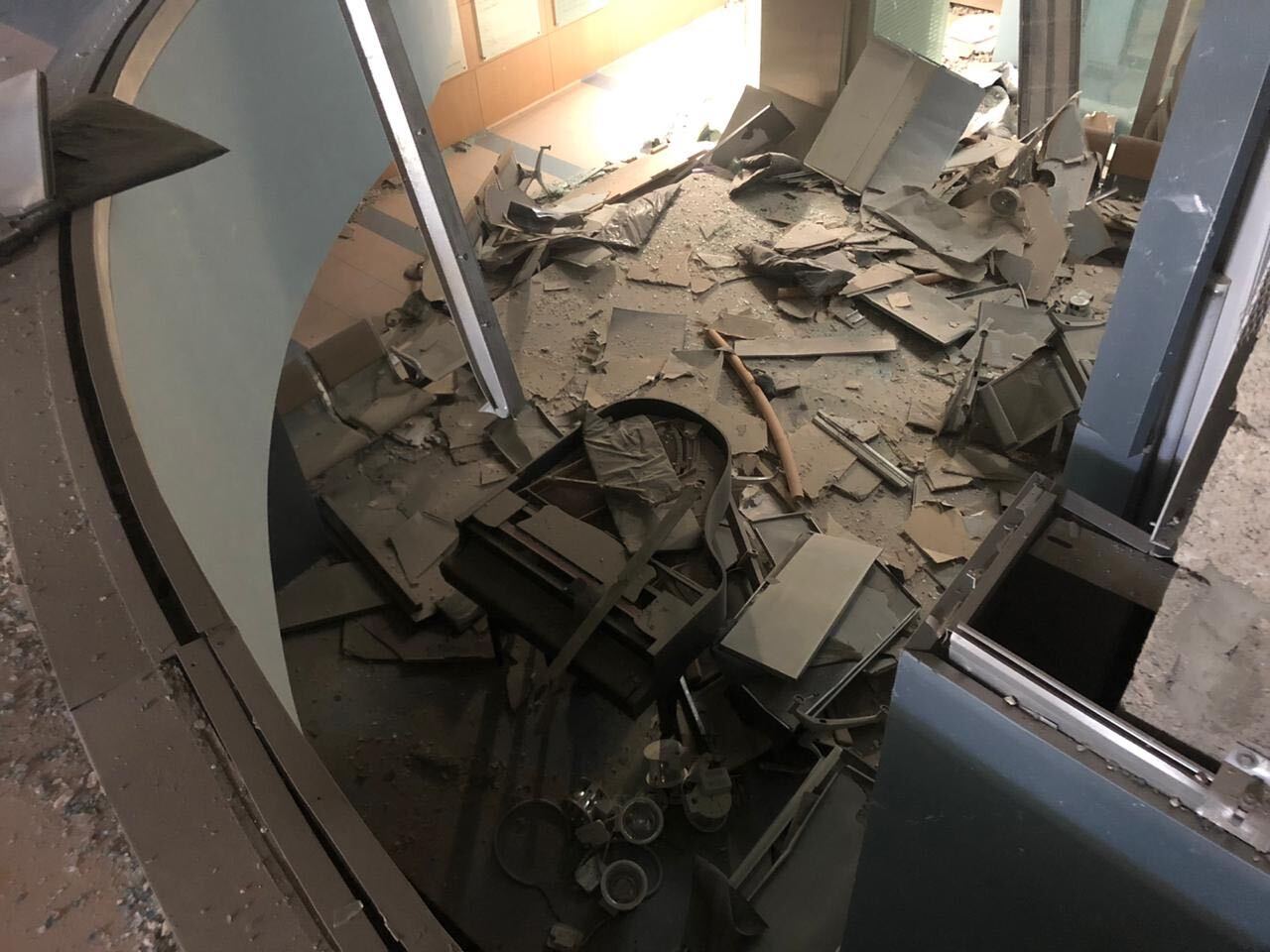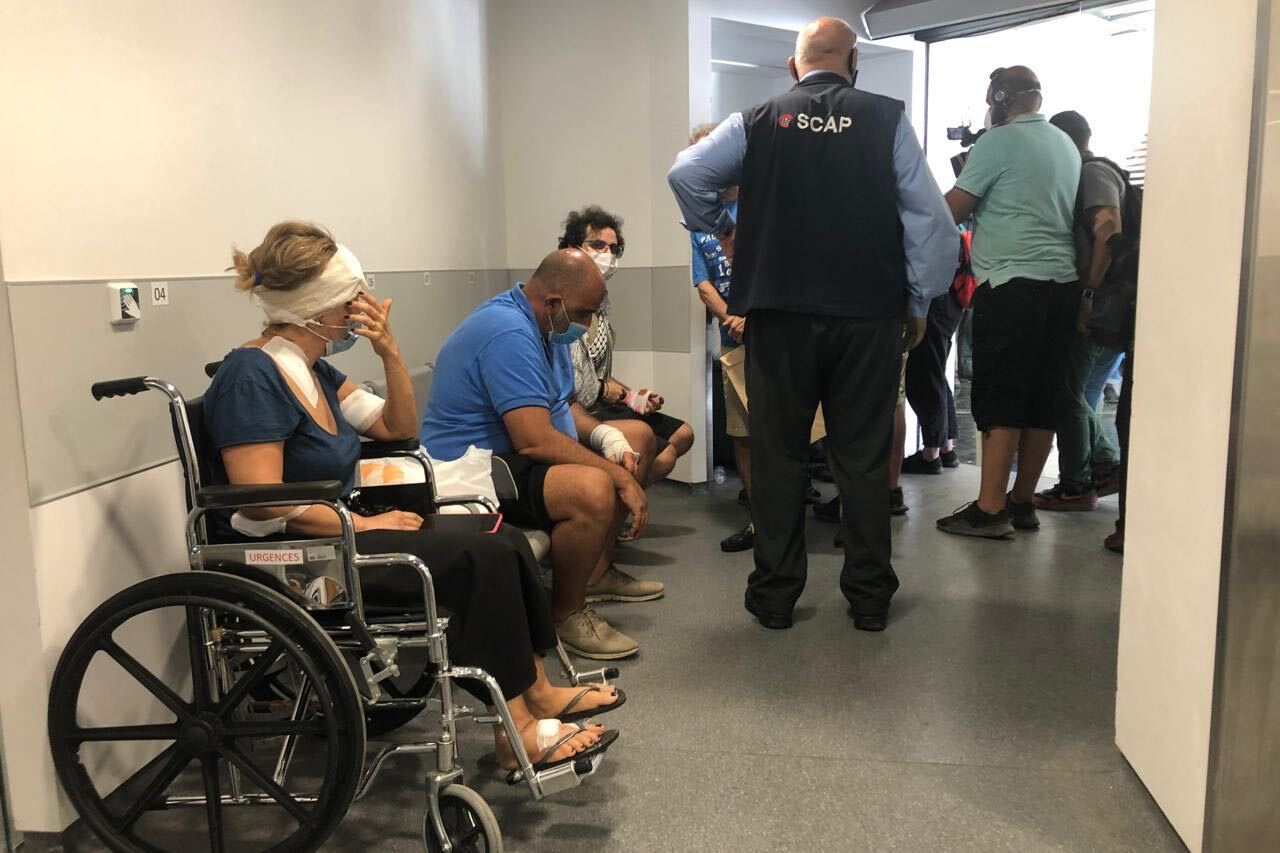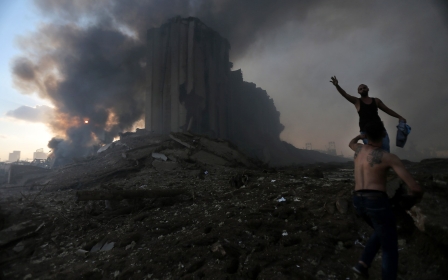Beirut explosion: Hospitals struggle to cope as injured Lebanese walk streets

As the red smoke from a massive chemical explosion swept over Beirut on Wednesday, hospitals were overwhelmed with patients, as medical staff, already grappling with the coronavirus pandemic, rallied to tend to the wounded.
Three hospitals visited by Middle East Eye were full to capacity following Tuesday's explosion, which, so far, has claimed at least 135 lives and injured more than 5,000.
Scenes upon entering the St George's hospital were horrific. Some of the wounded were being rushed to emergency rooms, while others carried visible injuries while waiting to be seen - bandages seeped with blood, some with fresh stitches, as others groaned in agony in wheelchairs.
Ammonium nitrate: What is it and how did it get to Beirut's port?
+ Show - HideThere are still many details surrounding the cause of the explosion that devastated much of Beirut on Tuesday that remain murky and unexplained.
However, the Lebanese government has so far indicated that they believe the enormous blast to have been the result of 2,700 tonnes of the chemical compound ammonium nitrate left lying in a warehouse in Beirut port since 2013.
Middle East Eye has compiled a quick guide to the destructive compound and the circumstances surrounding its fateful detonation on Tuesday.
What is ammonium nitrate?
Ammonium nitrate is an industrial chemical commonly used for fertilisers, but also as an explosive, often used in mining.
The chemical, known by the formula NH4NO3, is a naturally white crystalline solid and is often known as saltpetre.
Under most conditions ammonium nitrate is not necessarily dangerous and is relatively stable - it can even be used to smother a fire.
However, if contaminated it can become highly volatile.
What previous incidents have there been?
The most notorious confirmed ammonium nitrate explosion prior to Tuesday was the 1947 Texas City Disaster.
On 16 April 1947, at the Port of Texas City, 2,300 tonnes of ammonium nitrate exploded, killing almost 500 people.
More than 5,000 people were injured and at least 1,000 buildings levelled in the surrounding area.
It was the deadliest industrial accident in US history and resulted in the first-class action lawsuit against the US government on behalf of 8,485 victims.
A more recent incident involving ammonium nitrate took place in 2015 when a series of explosions at a chemical plant in the Chinese port city of Tianjin killed 173 people and injured 798.
Among the blasts at the port was the detonation of 800 tonnes of ammonium nitrate.
Eventually Chinese courts handed jail sentences to 49 government officials and warehouse executives and staff over their involvement in circumventing and loosening safety standards enabling the storage of dangerous chemicals.
How did the chemical end up in the port?
The chemicals originally arrived at Beirut's port on board a Russian-owned cargo vessel flying a Moldovan flag in September 2013.
The shipping monitoring organisation ShipArrested.com at the time reported that "upon inspection of the vessel by Port State Control, the vessel was forbidden from sailing. Most crew except the master and four crew members were repatriated and shortly afterwards the vessel was abandoned by her owners after charterers and cargo concern lost interest in the cargo".
According to documents posted online and seen by Al Jazeera, the ship's dangerous cargo was then offloaded and placed in hangar 12.
Numerous letters were reportedly sent by customs officials, including former director of Lebanese customs Shafik Merhi, to judges between 2014 and 2017 asking for guidance on what to do with the chemicals.
One letter sent in 2016 - which noted there had been "no reply" to previous requests - said the ammonium nitrate was being kept in "unsuitable" conditions.
"In view of the serious danger of keeping these goods in the hangar in unsuitable climatic conditions, we reaffirm our request to please request the marine agency to re-export these goods immediately to preserve the safety of the port and those working in it, or to look into agreeing to sell this amount," said the letter.
Another letter was sent by Lebanese customs administration director general Badri Daher on 27 October 2017 urging a resolution to the situation, in light of "the danger ... of leaving these goods in the place they are, and to those working there".
The building itself, less than a kilometre from the blast site, bore fresh scars of the tragedy, with the ceiling of the hospital lobby having caved in. Shattered glass was everywhere.
According to authorities, roughly 80 percent of the facility was damaged.
New MEE newsletter: Jerusalem Dispatch
Sign up to get the latest insights and analysis on Israel-Palestine, alongside Turkey Unpacked and other MEE newsletters
George Saad, responsible for Emergency Preparedness and Disaster Management at the hospital, said the blast killed at least 17 people at the hospital, including four nurses and 12 patients who were being treated for other ailments. The explosion also injured at least 160 people in the facility.
"It's a total disaster," Saad told Middle East Eye.
The Lebanese government has blamed Tuesday's explosion on a mammoth quantity of a chemical compound being housed at Beirut's port.
According to security personnel on duty at the time, the blast was so fierce they "felt the earth shake" before the seismic shock hit.
The scale of the disaster was laid bare when the Lebanese Red Cross put out an urgent call for blood donations, saying every blood type was needed.
Despite the destruction at the hospital, surviving medical staff were still treating incoming survivors late on Wednesday and said they had received some 300 patients.
Jeitaoui Hospital, located less than two kilometres from Beirut port, received minor damage but was also welcoming patients.
At least 12 people at the hospital had died in the blast, according to Rita Khalifeh, a nurse at the emergency room here.
Hotel Dieu de France - one of the leading medical centres in Lebanon - reported admitting 500 people in the past 24 hours.
No fewer than 50 patients immediately underwent critical operations, while 13 were registered as dead on arrival.
This hospital - which had been geared up to treat Covid-19 patients - has received the largest number of patients from the explosion, with 150 being moved to the emergency room for more serious injuries, authorities said.
Fewer ambulances were said to have been arriving at the facility later on Wednesday, but as the head of the emergency room told MEE the department could not accept any more patients, they were rushed to attend to a woman admitted for urgent care.
A young man stood in the emergency room, bandages wrapped around his head and a cast around his leg, eating a man'ousheh - a flatbread snack - while visibly in shock and distress from the horror he had experienced.
Doctors and medical staff said they had been on shift treating patients since 7am on Tuesday, and were continuing to work as of Wednesday evening.
Antoine Zoghbi, the head of the hospital, pleaded for external assistance and resources. He also noted patients and visitors had probably been exposed to the coronavirus since the blast, and that staff were taking precautions to continue fighting the spread of the virus.
The hospital is capable of providing much needed care to patients, with equipment still available, "but we need to be careful", he said.
Many injured patients were transferred to hospitals outside of the capital, including south to the city of Saida and to hospitals in the Mount Lebanon governorate.
Lebanon's pharmacists' union has also asked all pharmacies to open in order to treat those with minor injuries, so more space could be freed up in hospitals for those with serious injuries.
Middle East Eye delivers independent and unrivalled coverage and analysis of the Middle East, North Africa and beyond. To learn more about republishing this content and the associated fees, please fill out this form. More about MEE can be found here.







